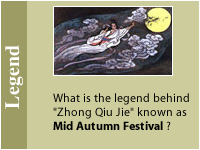![]() The
Origin
The
Origin
![]() The
Moon Fairylady
The
Moon Fairylady
![]() The
Moon
The
Moon
![]() Introduction
Introduction
![]() In
China
In
China
![]() In
America - US
In
America - US
![]() In Ghana & Nigeria
In Ghana & Nigeria
![]() In
India
In
India
![]() In
Israel
In
Israel
![]() In
Korea
In
Korea
![]() In Vietnam
In Vietnam
![]() Introduction
Introduction
![]() Places to celebrate
Places to celebrate
![]() Poems
Poems
![]() Introduction
Introduction
![]() Variety
Variety
![]() Recipes
Recipes
![]() Molds
Molds
![]() History
History
![]() Lantern Variety
Lantern Variety
![]() Related Activities
Related Activities
![]() Related links
Related links





